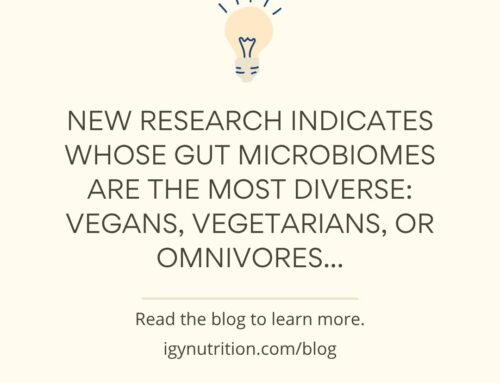Keto. Paleo. Vegan. Vegetarian. Gluten-free, dairy-free, low-carb, carnivore… the list goes on.
With all of the pop diets out there these days, how do you know which ones are healthy and would suit you?
Through this blog series, we’ll teach you how to evaluate diets based on science – no matter what your favorite influencer says about it.
We recommend starting at part one, but here’s a recap. When evaluating diets, you’ll want to check on a few different characteristics, including:
- Fiber intake
- Polyphenol content
- Probiotic / fermented food content
- Electrolyte intake
- Processed food content
- Micronutrient intake
- Caloric intake
- Fat, protein, and carbohydrate intake
- Gluten, dairy, or sugar intake: other triggers
- Price
- Sustainability
- Adherence / lifestyle match
That sounds like a lot – but tracking these criteria is much simpler than it sounds.
Let’s jump in! Today, we’ll look at caloric intake.
Caloric Intake
You’ve probably heard about calories in food before. Calories refer to the amount of energy your food provides your body (1).
For example, an apple provides about 100 calories (100 units of energy). A cheeseburger offers about 600 calories – six times the amount of energy that an apple contains.
Energy balance refers to the ratio between the energy you consume through calories and the energy you expend through activity. You want these to stay even to maintain your weight and metabolic health (2).
If you eat more than you need based on your activity, your energy balance is calorie-heavy – you will likely gain weight. If you eat less than you need based on your activity, your energy balance is activity-heavy – you will probably lose weight (2).
For example, a slightly active, 30-year-old, 5’10 male weighing 170 pounds at 20% body fat would require about 2300 calories per day. Eating more than 2300 calories would increase his weight, and eating less than that would decrease his weight (in theory).
You can estimate your caloric needs based on your height, age, gender, weight, activity level, and body fat percentage. Several online calculators will provide a rough estimate of your caloric needs. If you don’t know your body fat percentage, you can estimate it based on online photos.
But, of course, there’s a catch. Ever heard the phrase, “not all calories are created equal?” That’s because the content of the food you eat may affect how the calories are used. Check out our blogs on emulsifiers and macronutrients to learn more about this concept.
Diets and Caloric Intake
Let’s take a look at different diets and their caloric content.
Ketogenic diets are high in fat. Fat is not the enemy (read our blog on macronutrients to learn more). But fat is calorically dense, meaning there are many calories in a relatively small amount of it. For example, cooking oils like olive oil often contain 120 calories per tablespoon!
Unless monitored carefully, ketogenic diets tend to be high-calorie because of their emphasis on fat intake. High-calorie isn’t necessarily a bad thing, but if you are looking to lose or maintain weight, make sure to track your calorie intake carefully. One tablespoon of oil can easily turn into two if you’re just eyeballing it!
On the other hand, vegan diets, for example, tend to be low-calorie.
Plant foods like fruits, vegetables, and legumes are typically pretty low-calorie. But they’re pretty filling because of their large volume.
For example, one cup of grapefruit is about 100 calories, while a cup of red meat is about 520 calories.
You’d have to eat five cups of grapefruit to consume the same amount of calories as a cup of red meat. See how vegan diets could be low-calorie if not appropriately monitored?
Monitoring Your Diet of Choice for Calorie Intake
Don’t get us wrong – if appropriately monitored, nearly any diet can fit your caloric needs, whether they’re high or low.
If you’re eating a ketogenic diet, using a food scale for accurate portion measurement can be helpful. That way, you’ll know your 4-ounce portion of bacon is truly 4 ounces, that your teaspoon of oil is truly just one teaspoon, and that your tablespoon of nut butter is truly just one tablespoon.
If you’re on a vegan diet, add plenty of healthy fats and proteins to up your caloric intake. Consider tofu, tempeh, avocado, nuts, seeds, coconut oil, and avocado oil.
Tune in for the next part of this series, all about macronutrient intake!
References
- Osilla EV, Safadi AO, Sharma S. Calories. 2021 Sep 15. In: StatPearls [Internet]. Treasure Island (FL): StatPearls Publishing; 2022 Jan–. PMID: 29763084. https://pubmed.ncbi.nlm.nih.gov/29763084/#:~:text=Calories%20are%20a%20measure%20of,to%20the%20calories%20in%20food.
- Hill, James O et al. “The Importance of Energy Balance.” European endocrinology vol. 9,2 (2013): 111-115. doi:10.17925/EE.2013.09.02.111 https://www.ncbi.nlm.nih.gov/pmc/articles/PMC6003580/




